Hyundai Nexo (FE)
Compact CrossoverProduct Gallery
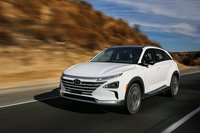
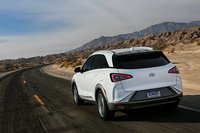
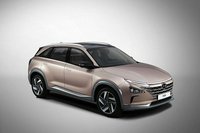
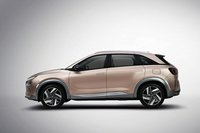
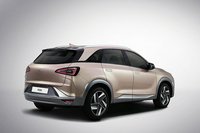
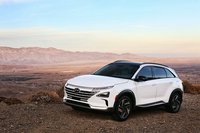
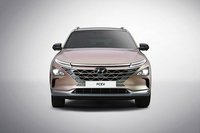
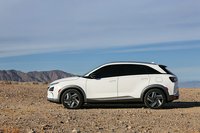
Product Overview
Hyundai Nexo (chassis code FE) is a compact fuel cell crossover in production from 2018. It is available with a single hydrogen fuel-cell drivetrain with 120kW of peak power output.
The Nexo is the first hydrogen fuel cell vehicle from Korea.
Those who drive offroad, for work or leisure, need to think twice before pulling the trigger: the Hyundai Nexo is hardly the "offroader" that Hyundai would like you to think.
Ratings
What we found
Neofiliac score 43%
Pros
- Powered by zero-emission hydrogen fuel cell
Cons
- Poor performance
- Poor suspension setup
What external reviewers found
External score 56%
Pros
- Superb range
- Impressive fuel cell efficiency
- Sleek design
- Decent electric motor
- Sleek styling
- Fantastic infotainment system
Cons
- Poor infotainment system
- Poor handling
- No head-up display
- Heavy and heavy
- High fuel consumption
- High price
Your rating:
12345678910
?/10
Price Comparison
As associates of the merchants above, we earn a commission when you make a purchase using the supplied links.
Specifications
[{"Ft":"Capacity","Fn":"Cargo Capacity","Fv":"461 L / 16.3 cu-ft ~ 1466 L / 51.8 cu-ft"},{"Ft":"Capacity","Fn":"Passengers","Fv":"5"},{"Ft":"Capacity","Fn":"Payload","Fv":"451 kg / 994 lbs"},{"Ft":"Chassis","Fn":"Brakes | Front","Fv":"Ventilated discs"},{"Ft":"Chassis","Fn":"Brakes | Rear","Fv":"Disc"},{"Ft":"Chassis","Fn":"Power Steering","Fv":"Electric Steering"},{"Ft":"Chassis","Fn":"Suspension | Front","Fv":"MacPherson strut"},{"Ft":"Chassis","Fn":"Suspension | Rear","Fv":"Multi-link"},{"Ft":"Chassis","Fn":"Tire Size","Fv":"225/60 R17, 245/45 R19"},{"Ft":"Chassis","Fn":"Turning Circle","Fv":"11.2 m / 36.7 ft"},{"Ft":"Construction","Fn":"Battery | Capacity","Fv":"1.6 kWh (gross)"},{"Ft":"Construction","Fn":"Body Style","Fv":"5-door hydrogen fuel cell SUV"},{"Ft":"Dimensions","Fn":"Ground Clearance","Fv":"162 mm / 6.4 in"},{"Ft":"Dimensions","Fn":"Size | Height","Fv":"1630 mm / 64.2 in"},{"Ft":"Dimensions","Fn":"Size | Length","Fv":"4670 mm / 183.9 in"},{"Ft":"Dimensions","Fn":"Size | Width","Fv":"1860 mm / 73.2 in"},{"Ft":"Dimensions","Fn":"Track Width | Front","Fv":"1614.0 mm / 63.5 in"},{"Ft":"Dimensions","Fn":"Track Width | Rear","Fv":"1625.0 mm / 64.0 in"},{"Ft":"Dimensions","Fn":"Weight","Fv":"1889.0 kg / 4164.5 lbs"},{"Ft":"Dimensions","Fn":"Wheel Size","Fv":"7.0J x 17, 7.5J x 19"},{"Ft":"Dimensions","Fn":"Wheelbase","Fv":"2790 mm / 109.8 in"},{"Ft":"Performance","Fn":"Acceleration | 0 - 100 km/h","Fv":"9.2 sec"},{"Ft":"Performance","Fn":"Acceleration | 0 - 60 mph","Fv":"8.7 sec"},{"Ft":"Performance","Fn":"Coefficient Of Drag","Fv":"0.32"},{"Ft":"Performance","Fn":"Top Speed","Fv":"177.0 km/h / 110.0 mph"},{"Ft":"Powertrain","Fn":"Drivetrain Layout","Fv":"Front-wheel drive"},{"Ft":"Powertrain","Fn":"Engine | Power","Fv":"163 hp / 121.5 kW"},{"Ft":"Powertrain","Fn":"Engine | Type","Fv":"hydrogen engine"},{"Ft":"Powertrain","Fn":"Transmission | Type","Fv":"CVT"},{"Ft":"Production","Fn":"Availability","Fv":"2018"}]
External Reviews
autocar[1]
Reviewer score 61% (normalized by Neofiliac), the same amount as 42 adults. CO2 reduction achieved by driving the Nexo over a petrol car. In one 8.7-mile section of my drive, the system claimed CO2 was reduced by 2.1kg. The 120kW motor delivers 161bhp and 291lb ft of torque. It rides comfortably but there’s a fair bit of judder on uneven Tarmac.
Pros
- Powerful 120kW motor
- Easy to drive
Cons
- Heavy and heavy
- Poor handling
cnet[2]
Reviewer score 76% (normalized by Neofiliac)As it's a Hyundai, there should be no surprise that the Nexo packs a ton of features in as standard. There's lots of storage space under the center console, including USB ports and a wireless charging pad. The base Nexo Blue starts at $59,910 including destination, with the Limited costing $3,450.
Pros
- Fantastic infotainment system
- Huge array of features
Cons
- No head-up display
- No interior ambient lighting
Also Check
References
<
>
x